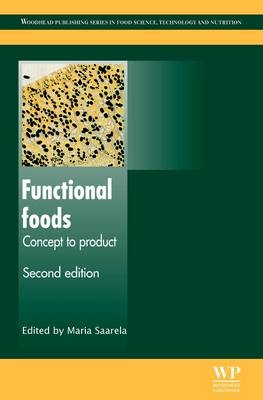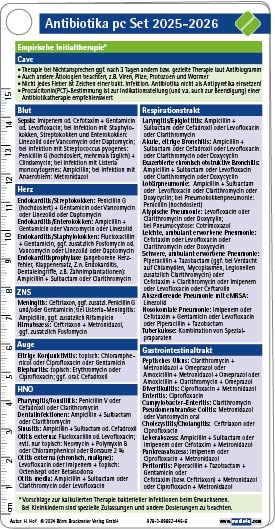
Functional Foods
Woodhead Publishing Ltd (Verlag)
978-0-08-101689-3 (ISBN)
Dr Maria Saarela holds a senior position at VTT, one of the world's leading centres for food research. She has published widely, particularly on aspects relating to probiotic dairy products.
Contributor contact details
Woodhead Publishing Series in Food Science, Technology and Nutrition
Preface
Part I: General issues with functional foods
Chapter 1: Defining functional foods and associated claims
Abstract:
1.1 Introduction
1.2 Functional foods: defining the concept
1.3 Functional food science
1.4 Communicating functional claims
1.5 Case studies
1.6 Conclusions and future trends
Chapter 2: EU legislation and functional foods: a case study
Abstract:
2.1 Introduction
2.2 Product description
2.3 Product positioning in the European market
2.4 Product composition
2.5 Claims
2.6 Packaging
2.7 Labelling
2.8 Manufacture
2.9 Conclusions
2.11 Appendix: note
Chapter 3: U.S. regulation of functional foods
Abstract:
3.1 Introduction
3.2 Food label health claims
3.3 Food label structure/function claims
3.4 Food label nutrient content claims
3.5 Medical food and food for special dietary use
3.6 Ingredient safety
3.7 Sources of further information and advice
3.9 Appendix: definitions
Chapter 4: Australia and New Zealand regulations on nutrition, health and related claims made on foods
Abstract:
4.1 Introduction
4.2 Functional foods: current trends and market
4.3 Australia and New Zealand legislation and functional foods
4.4 Scientific substantiation of health claims
4.5 Australia and New Zealand regulatory framework in the light of global harmonisation
4.6 Implementation
4.7 Implications for the development and manufacture of functional foods
4.8 Future trends
4.9 Sources of further information and advice
Chapter 5: Legislation of functional foods in Asia
Abstract:
5.1 Introduction: historical background
5.2 Regulatory challenges for marketing of functional foods
5.3 Definition and categories of functional foods in various Asian countries
5.4 Food and drug interface: regulatory framework for functional foods
5.5 Nutrition and health claims
5.6 Labelling of functional foods
5.7 Health claims and consumer confidence
5.8 Future trends: harmonization of law and regulations of functional foods
5.9 Sources of further information and governmental websites
5.10 Acknowledgements
Chapter 6: Consumers and health claims for functional foods
Abstract:
6.1 Introduction
6.2 Consumer perceptions of health claims
6.3 Consumer acceptability of health claims
6.4 Implications for dairy product development
6.5 Future trends
6.6 Sources of further information and advice
Part II: Functional foods and health
Chapter 7: Functional foods and acute gastrointestinal infections
Abstract:
7.1 Introduction
7.2 How the intervention might work
7.3 How to assess the effectiveness of probiotics and/or prebiotics
7.4 What is the aim of this chapter?
7.5 Probiotics
7.6 Prebiotics
7.7 Synbiotics
7.8 Conclusions and future trends
7.9 Sources of further information and advice
Chapter 8: Functional foods and coronary heart disease (CHD)
Abstract:
8.1 Introduction
8.2 Coronary heart disease and risk factors
8.3 Relevant lipid particles
8.4 Diet and coronary heart disease risk: the evidence
8.5 The effects of probiotics including fermented milk products and lactic acid bacteria on coronary heart disease
8.6 The effects of prebiotics on coronary heart disease
8.7 The effects of synbiotics including combinations of lactic acid bacteria and prebiotic fibres on coronary heart disease
8.8 Future trends
Chapter 9: Anti-tumour properties of functional foods
Abstract:
9.1 Introduction
9.2 Carcinogenesis and the biology of cancer
9.3 Protective effects of nutrients
9.4 Protective effects of phytochemicals
9.5 Carbohydrates and their fermentation products
9.6 Conclusion: the role of functional foods and future trends
Chapter 10: Functional foods and obesity
Abstract:
10.1 Introduction
10.2 Functional foods contribution to weight management
10.3 Formulating food products for weight control
10.4 Future trends
10.5 Sources of further information and advice
Chapter 11: Functional foods and prevention of diabetes
Abstract:
11.1 Introduction
11.2 Food and diet as contributing factors to the rise in diabetes
11.3 Effects of different food components on insulin secretion, insulin resistance and development of diabetes
11.4 Formulating food products for diabetes prevention
11.5 Future trends
Chapter 12: Functional foods and cognition
Abstract:
12.1 Introduction
12.2 Modulators of cognitive functions
12.3 Selection of appropriate cognitive outcome measures
12.4 Nutraceuticals and cognitive function
12.5 Effects of ageing on cognition and brain biology
12.6 Effects of glucose and carbohydrates
12.7 Nutraceuticals for cognitive enhancement
12.8 Conclusions
12.9 Sources of further information and advice
Chapter 13: Functional foods and bone health
Abstract:
13.1 Introduction
13.2 Overview of bone growth and maintenance
13.3 How key nutrients and dietary factors impact bone health
13.4 Dietary sources of nutrients and dietary factors related to bone health, and safety considerations
13.5 Case studies of functional foods designed to improve intake of bone health factors
13.6 Future trends
13.7 Issues related to product targeting and consumer acceptance of bone-healthy functional foods
Part III: Developing functional food products
Chapter 14: Maximising the functional benefits of plant foods
Abstract:
14.1 Introduction
14.2 The concept of functionality
14.3 The situation in the developing world
14.4 The priorities for nutritional enhancement
14.5 Strategies for nutritional enhancement
14.6 Improvements in handling, storage and food processing technologies
14.7 Future trends
Chapter 15: Developing functional ingredients: a case study of pea protein
Abstract:
15.1 Introduction: the nutritional properties of peas
15.2 Improving pea protein
15.3 Processing issues in improving pea protein
15.4 Adding improved protein to food products
15.5 Evaluating the nutritional, functional and sensory properties of improved pea protein in food products
15.6 New technologies for improved nutritional and functional value of pea protein (NUTRIPEA)
15.7 Future trends
15.8 Sources of further information and advice: past and present EU projects, networks and special reports in the field
Chapter 16: Functional fats and spreads
Abstract:
16.1 Introduction
16.2 EU legislation on fats and spreads
16.3 Functional ingredients and chronic diseases: applications in fats and spreads
16.4 Methods for modifying fats and oils
16.5 Future trends
16.6 Sources of further information and advice
Chapter 17: Omega-3 polyunsaturated fatty acids (PUFAs) as food ingredients
Abstract:
17.1 Introduction
17.2 Health aspects of omega-3 polyunsaturated fatty acids (PUFAs)
17.3 Sources of omega-3 PUFAs
17.4 The problems associated with using omega-3 PUFAs in foods
17.5 Factors affecting lipid oxidation in omega-3 PUFA enriched foods
17.6 The effect of antioxidant addition
17.7 Future trends
17.8 Sources of further information and advice
Chapter 18: Probiotic functional foods
Abstract:
18.1 Introduction to probiotics and their health effects
18.2 Probiotic food market in Europe and the United States
18.3 Probiotic technology and challenges in the probiotic formulation into foods
18.4 Probiotic food categories
18.5 Future trends
Chapter 19: Functional foods for the gut: probiotics, prebiotics and synbiotics
Abstract:
19.1 Introduction
19.2 The composition of gastrointestinal (GI) microbiota
19.3 Probiotics
19.4 Prebiotics and synbiotics
19.5 Conclusions
Chapter 20: Bioactive milk proteins, peptides and lipids and other functional components derived from milk and bovine colostrum
Abstract:
20.1 Introduction
20.2 Bioactive proteins
20.3 Bioactive peptides
20.4 Bioactive lipids
20.5 Other bioactive components
20.6 Conclusions
20.7 Future trends
Chapter 21: Functional meat products
Abstract:
21.1 Introduction
21.2 Meat consumption and human health
21.3 Meat-based bioactive compounds
21.4 Development of functional meat products
21.5 Future trends of functional meat products
Chapter 22: Functional soy products
Abstract:
22.1 Introduction
22.2 Major compositions of soybeans
22.3 Soy consumption in different populations
22.4 Functional soy foods
22.5 Safety aspects of soy
22.6 Future trends
Chapter 23: Functional seafood products
Abstract:
23.1 Introduction
23.2 Health aspects of seafood
23.3 Potential for development of functional seafood products
23.4 Development of functional seafood products with dietary fibres
23.5 Conclusions
Chapter 24: Dietary fibre functional products
Abstract:
24.1 Introduction
24.2 Defining dietary fibre
24.3 Sources of dietary fibre
24.4 Processing dietary fibre ingredients
24.5 Processing foods containing dietary fibre
24.6 The physiological effects of dietary fibre
24.7 Recommended intakes of dietary fibre
24.8 Conclusions and future trends
Index
| Erscheinungsdatum | 07.07.2016 |
|---|---|
| Reihe/Serie | Woodhead Publishing Series in Food Science, Technology and Nutrition |
| Verlagsort | Cambridge |
| Sprache | englisch |
| Maße | 156 x 234 mm |
| Gewicht | 930 g |
| Themenwelt | Medizin / Pharmazie ► Medizinische Fachgebiete |
| Technik ► Lebensmitteltechnologie | |
| ISBN-10 | 0-08-101689-1 / 0081016891 |
| ISBN-13 | 978-0-08-101689-3 / 9780081016893 |
| Zustand | Neuware |
| Haben Sie eine Frage zum Produkt? |
aus dem Bereich


